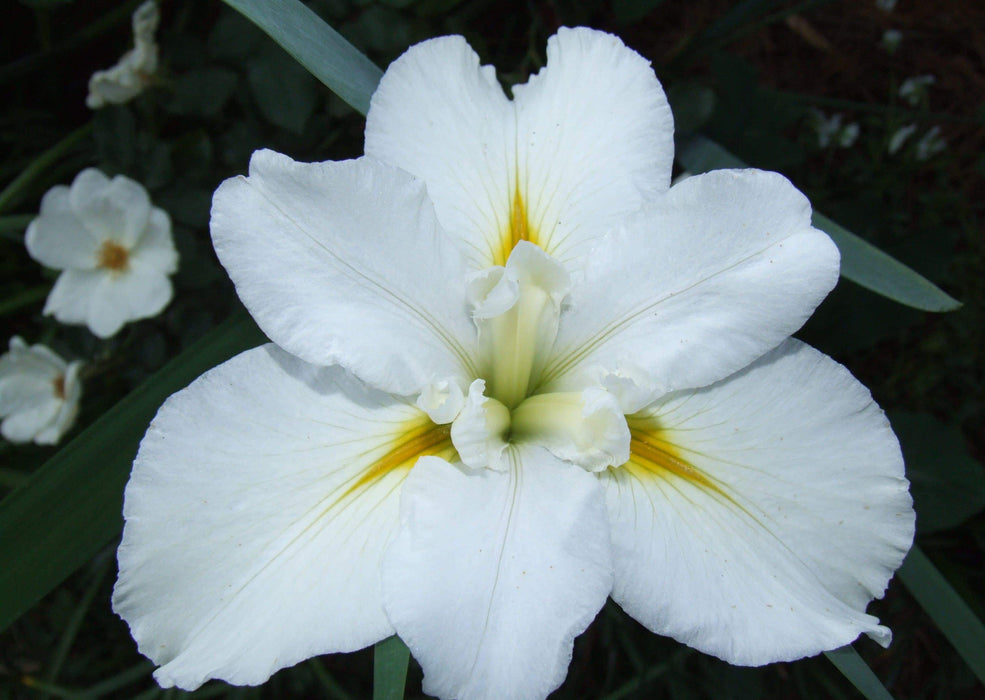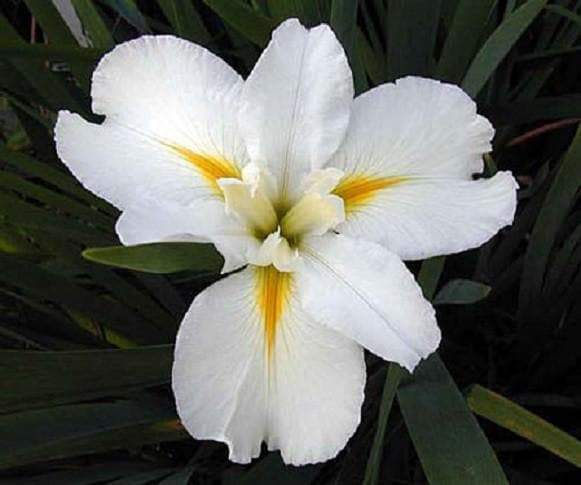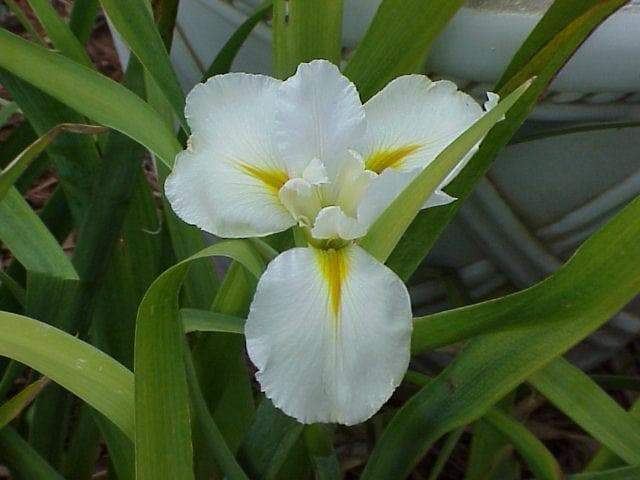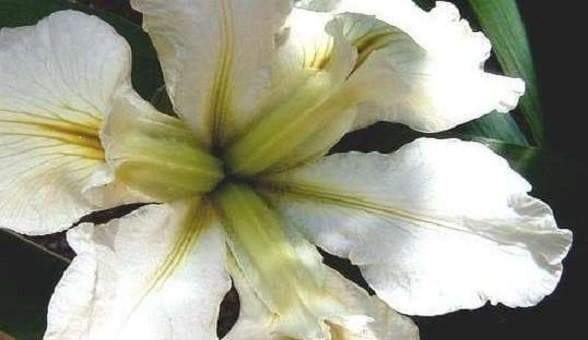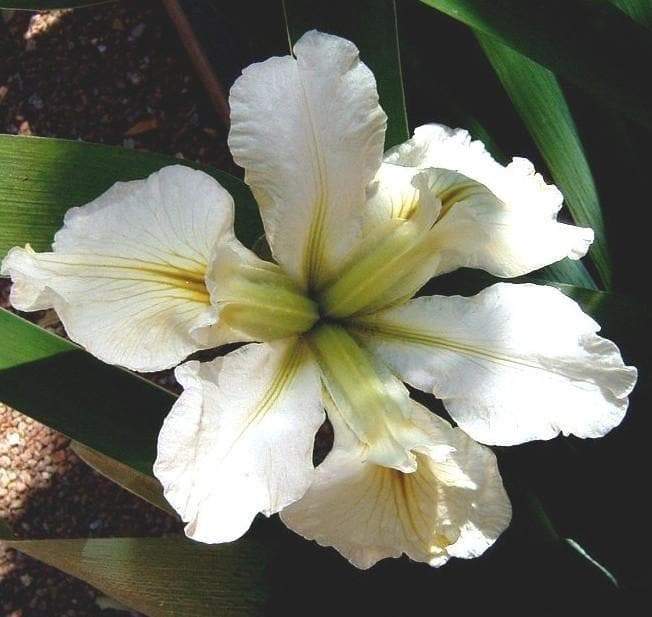
Louisiana Iris "Marie Dolores" (2 tuber/rhizomes) 2 year division. Bloom,Early and mid-spring"
Original price
$ 12.05
-
Original price
$ 12.05
Original price
$ 12.05
$ 12.05
-
$ 12.05
Current price
$ 12.05
Most orders are processed by the next day
Select your desired size and/or color from the available options.
Louisiana irises are complex hybrids of several species, most native to the Gulf Coast region of the United States. The foliage is sword-shaped, medium green and equitant (borne in fan-like folds). The leaves and flower stalks are produced from rapidly spreading fleshy rhizomes (underground lateral stems).
Plant Louisiana irises in full sun to dappled shade in rich, acid or neutral soil that is soggy or just moist. Plants usually go semi-dormant in summer's heat and growth resumes by late summer. Minimally cold-hardy, Louisiana iris will tolerate sub-freezing temperatures but not extended spells of bitter cold. Divide these long-lived perennials every 2 to 5 years in late summer (toward the end of their semi-dormant period) if they look crowded or if flowering wanes. The iris deserves prominent placement in the sunny border, at pond edges or in beds. Where not hardy grow them in large containers or lift and store the rhizomes over the winter.
Planting
Dig holes or beds wide, not deep
Lightly amend heavy clay or sandy soils with organic matter
Gently remove plants from containers, keeping the root ball intact
Loosen potting soil and roots around bottom and edges of root ball
Plant level with surrounding soil, spreading roots outward
Fill around roots with lightly amended native soil
Water to settle soil around roots
Cover the area with leaf or bark mulch 1 - 3 inches thick but not piled up onto the plant's stem/trunk
Water deeply
Watering
Fast-growing herbaceous plants require more attention to watering than woody plants
When possible, water in the morning to avoid promoting diseases from night watering
Water slowly and deeply when plants begin to wilt and do not perk up at night
Watering twice, a few minutes apart, helps water soak in deeper
Soaker hoses and trickle or "drip" irrigation are very efficient and water-conservative
Never overwater, or you may cause root problems
Mulches help reduce water evaporation in hot or dry weather
In dry climates, form a soil "ring" around plants to hold water longer
Pruning
Tall or leggy plants may be cut or pinched back to stimulate strong new growth
Cut or pinch stems of flowering or foliage plants just above leaves or old leaf joints
Thin excess growth so remaining growth will be more vigorous
"Deadhead" - remove faded flowers or seedheads to stimulate new flowering growth
Remove dead, faded, or diseased foliage as needed
Remove some foliage during transplanting to reduce stress on new roots
Clean up plants at the end of the season to reduce pest or disease buildup and to keep the area neat
Avoid putting diseased plant parts in the compost, or risk spreading diseases later
Propagation
Divide clump-forming perennials such as hosta, daylily, iris, sedum, phlox, and most ornamental grasses in the late fall or late winter into individual plants, each with a piece of stem, crown (body), and roots
Sow seed of perennials such as coneflowers, coreopsis, and others in the late summer or late spring, keeping them moist and giving them enough time to sprout and grow roots before extreme cold or hot weather Select your desired size and color from the available option
Plant Louisiana irises in full sun to dappled shade in rich, acid or neutral soil that is soggy or just moist. Plants usually go semi-dormant in summer's heat and growth resumes by late summer. Minimally cold-hardy, Louisiana iris will tolerate sub-freezing temperatures but not extended spells of bitter cold. Divide these long-lived perennials every 2 to 5 years in late summer (toward the end of their semi-dormant period) if they look crowded or if flowering wanes. The iris deserves prominent placement in the sunny border, at pond edges or in beds. Where not hardy grow them in large containers or lift and store the rhizomes over the winter.
Planting
Dig holes or beds wide, not deep
Lightly amend heavy clay or sandy soils with organic matter
Gently remove plants from containers, keeping the root ball intact
Loosen potting soil and roots around bottom and edges of root ball
Plant level with surrounding soil, spreading roots outward
Fill around roots with lightly amended native soil
Water to settle soil around roots
Cover the area with leaf or bark mulch 1 - 3 inches thick but not piled up onto the plant's stem/trunk
Water deeply
Watering
Fast-growing herbaceous plants require more attention to watering than woody plants
When possible, water in the morning to avoid promoting diseases from night watering
Water slowly and deeply when plants begin to wilt and do not perk up at night
Watering twice, a few minutes apart, helps water soak in deeper
Soaker hoses and trickle or "drip" irrigation are very efficient and water-conservative
Never overwater, or you may cause root problems
Mulches help reduce water evaporation in hot or dry weather
In dry climates, form a soil "ring" around plants to hold water longer
Pruning
Tall or leggy plants may be cut or pinched back to stimulate strong new growth
Cut or pinch stems of flowering or foliage plants just above leaves or old leaf joints
Thin excess growth so remaining growth will be more vigorous
"Deadhead" - remove faded flowers or seedheads to stimulate new flowering growth
Remove dead, faded, or diseased foliage as needed
Remove some foliage during transplanting to reduce stress on new roots
Clean up plants at the end of the season to reduce pest or disease buildup and to keep the area neat
Avoid putting diseased plant parts in the compost, or risk spreading diseases later
Propagation
Divide clump-forming perennials such as hosta, daylily, iris, sedum, phlox, and most ornamental grasses in the late fall or late winter into individual plants, each with a piece of stem, crown (body), and roots
Sow seed of perennials such as coneflowers, coreopsis, and others in the late summer or late spring, keeping them moist and giving them enough time to sprout and grow roots before extreme cold or hot weather Select your desired size and color from the available option
LET OUR CUSTOMER SPEAK FOR US

![[Seeds] - Caribbeangardenseed](http://caribbeangardenseed.com/cdn/shop/files/gift-card-gift-card-1_1024x1024_dfa857db-9150-4315-a362-7f0bb3fb9c47_60x28.png?v=1703978838)
